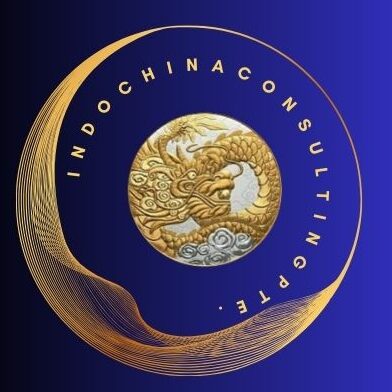Startups are often laser-focused on rapid growth, but in today’s world, scaling at all costs is no longer acceptable. Investors, consumers, and even employees now expect companies to prioritize sustainability alongside profitability. But is it possible to achieve hypergrowth while staying true to sustainable principles? The answer is yes. By applying growth hacking strategies with sustainability in mind, startups can scale responsibly without compromising their impact. I’ll introduce five strategies in the blog below.
If you do find yourself at the growth stage, please consider the benefits of having a seasoned entrepreneur join your mission as a coach. I wrote a blog about the benefits of coaching and some of the facts might surprise you.
Growth Hacking Strategy #1: Align Growth Strategies with Sustainability Goals
Too often, startups treat sustainability as an afterthought rather than a core part of their business model. The most successful impact-driven companies integrate sustainability into their growth strategy from day one.
For example, companies like Patagonia and Tesla have built their entire brand around sustainability, turning their environmental mission into a competitive advantage. By aligning your startup’s growth with a meaningful mission, you can attract loyal customers and investors who support your values.
Growth Hacking Strategy #2: Leverage Network Effects for Sustainable Growth
Network effects—where a product or service becomes more valuable as more people use it—are a powerful growth hacking tool. But how can startups leverage them for sustainability?
Consider platforms like Too Good To Go, which connects businesses with surplus food to consumers at a discount. The more restaurants and users that join, the greater the environmental impact. By building a model where sustainability improves as scale increases, you create a self-reinforcing loop of both impact and profit.
Growth Hacking Strategy #3: Use Data-Driven Decision-Making for Sustainable Scaling
Growth hacking relies on rapid experimentation, but scaling sustainably requires balancing growth with responsible decision-making. Startups should use data to track both business KPIs and environmental/social impact.
For instance, a company like Oatly uses data to show how their plant-based milk reduces CO2 emissions compared to dairy. By incorporating sustainability metrics into your growth dashboards, you can ensure that scaling doesn’t come at the expense of your impact mission.
Growth Hacking Strategy #4: Incorporate Circular Economy Principles
Many startups miss out on opportunities to reduce waste and increase efficiency. The circular economy—where products and materials are reused, recycled, or repurposed—can be a massive growth driver.
Brands like Allbirds and Rothy’s use sustainable materials and closed-loop production systems, turning eco-consciousness into a selling point. If your startup produces physical goods, consider how you can minimize waste and create products that contribute to a circular economy.
Growth Hacking Strategy #5: Turn Customers Into Advocates for Impact-Driven Growth
One of the most effective growth hacks is leveraging customers as brand ambassadors. When people believe in your mission, they naturally share it.
Take Ecosia, the search engine that plants trees with ad revenue. Their users actively promote the service because they feel part of a bigger movement. Encouraging user-generated content, referral programs, and community engagement can drive growth while deepening your startup’s impact.
Frequently Asked Questions (FAQs)
- Can a startup really achieve rapid growth while prioritizing sustainability?
Absolutely. Many successful startups have scaled while maintaining a commitment to sustainability. By embedding sustainability into your growth strategy, you create long-term value that attracts conscious consumers and investors. - What are the biggest challenges of sustainable growth hacking?
The primary challenges include balancing profitability with sustainability, overcoming initial cost barriers, and educating consumers about your mission. However, with the right strategy, these challenges can become opportunities. - How do I measure the sustainability impact of my startup’s growth strategies?
Use key sustainability metrics such as carbon footprint reduction, waste minimization, and social impact indicators. Many startups also align their impact tracking with the United Nations Sustainable Development Goals (SDGs). - Are there funding options specifically for sustainable startups?
Yes! There are many impact-focused VCs, grants, and crowdfunding platforms that support sustainability-driven startups. Examples include Breakthrough Energy Ventures, the Green Climate Fund, and impact investment firms like Generation Investment Management.
Resources for Further Reading and Free Information Books:
-
- “The Lean Startup” by Eric Ries – Essential reading for growth hacking and sustainable innovation.
- “Let My People Go Surfing” by Yvon Chouinard – Insights from Patagonia’s founder on building a sustainable brand.
- “Cradle to Cradle: Remaking the Way We Make Things” by William McDonough – A deep dive into circular economy principles.
- Online Courses & Free Resources:
- UN Sustainable Development Goals (SDGs): https://sdgs.un.org/goals – Learn how startups can align with global sustainability efforts.
- Coursera – Business Strategies for Social Impact: A free course covering sustainable business models.
- Google’s Startup Sustainability Guide: Insights and case studies on eco-friendly growth strategies.
- Impact Investment & Funding Sources:
- Breakthrough Energy Ventures – Funds startups focused on climate tech solutions.
- Green Climate Fund – Offers grants and funding for sustainability-driven innovations.
- Patagonia’s Tin Shed Ventures – Invests in companies working on environmental impact solutions.
Final Thought:
Sustainable growth isn’t a trade-off—it’s an opportunity. By integrating sustainability into your growth strategy, you’re not just building a successful business; you’re creating a brand that stands the test of time.
The startups that thrive in the next decade will be those that scale responsibly. Are you ready to be one of them?
